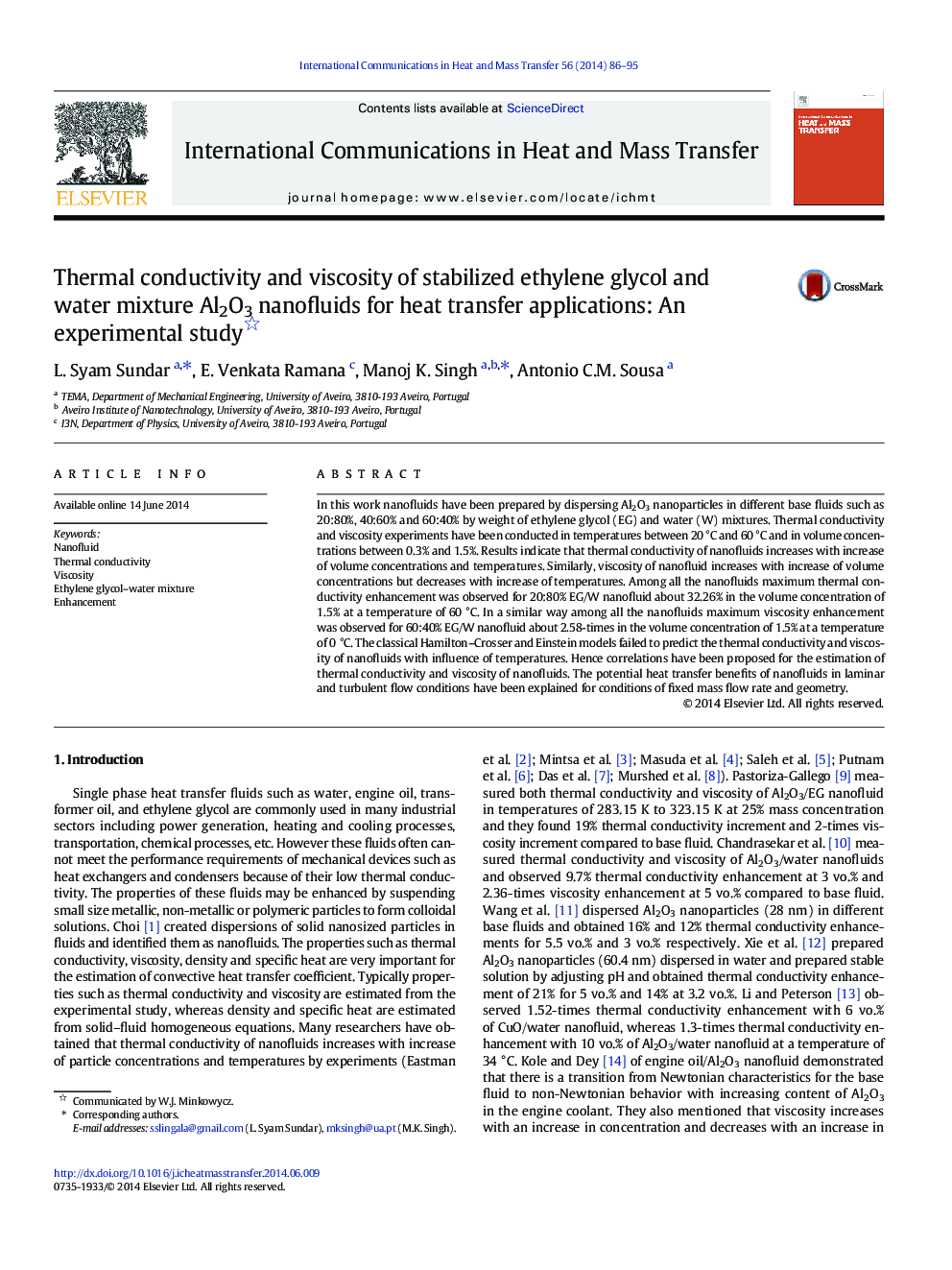| Article ID | Journal | Published Year | Pages | File Type |
|---|---|---|---|---|
| 653233 | International Communications in Heat and Mass Transfer | 2014 | 10 Pages |
In this work nanofluids have been prepared by dispersing Al2O3 nanoparticles in different base fluids such as 20:80%, 40:60% and 60:40% by weight of ethylene glycol (EG) and water (W) mixtures. Thermal conductivity and viscosity experiments have been conducted in temperatures between 20 °C and 60 °C and in volume concentrations between 0.3% and 1.5%. Results indicate that thermal conductivity of nanofluids increases with increase of volume concentrations and temperatures. Similarly, viscosity of nanofluid increases with increase of volume concentrations but decreases with increase of temperatures. Among all the nanofluids maximum thermal conductivity enhancement was observed for 20:80% EG/W nanofluid about 32.26% in the volume concentration of 1.5% at a temperature of 60 °C. In a similar way among all the nanofluids maximum viscosity enhancement was observed for 60:40% EG/W nanofluid about 2.58-times in the volume concentration of 1.5% at a temperature of 0 °C. The classical Hamilton–Crosser and Einstein models failed to predict the thermal conductivity and viscosity of nanofluids with influence of temperatures. Hence correlations have been proposed for the estimation of thermal conductivity and viscosity of nanofluids. The potential heat transfer benefits of nanofluids in laminar and turbulent flow conditions have been explained for conditions of fixed mass flow rate and geometry.
